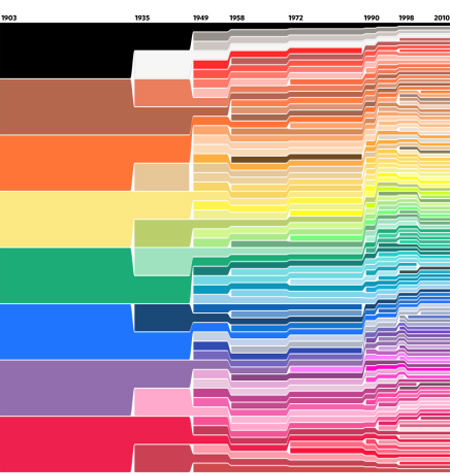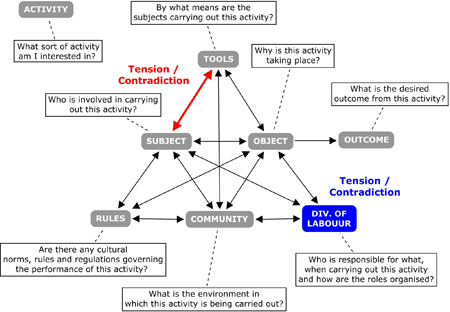This post is an early contribution to an exploratory exercise in collaborative writing following recent discussions with fellow Twitter users @jennifermjones, @martin_eve and @FlyGirlTwo. In discussing the activities associated with the recently established Twitter hashtag #phdchat and its emergent postgraduate student following, we hope to use our own online spaces to create an open dialogue for critical reflection that others (not least ‘phdchat-ters’ themselves) can contribute to and develop.
#phdchat is a themed, hour-long session held every Wednesday at 7.30pm UK time, with associated asynchronous chat through the rest of the week, and – at present – limited activity on other platforms (a wiki and a Facebook Group). For a more detailed overview, and an account of its brief history, see Martin’s excellent introductory post.
Many of the increasing number of studies into Twitter have adopted modes of enquiry based on largely quantitative and data mining methods, which provide very useful indicators of participation activity, frequency and interactions, often utilising easily accessible visual forms of dissemination. Microblogs like Twitter present researchers with explicit environments that lend themselves – perhaps too easily – to a network-based research paradigm that can reduce user relationships and interaction to nodes and clusters without adequately addressing the complexities that underpin such activities.
By critiquing such methodologies we can also problematize the over-emphasis on digital artefacts as a singular indicator of social media use. Whilst I realise active participation is fundamental to the web 2.0 rhetoric, we should recognise that the production and re-appropriation of digital artefacts do not necessarily represent the full picture of social media engagement and interaction. For example, I contributed to a recent weekly chat in between cooking tagliatelle and watching football on TV.
Several studies have attempted to develop more qualitative models for analysing tweets, including boyd, Golder et al.’s (2010) look into retweeting practices, whilst others (for example, Priem & Costello, 2010) adopt a mixed methods approach, supporting quantitative data with participant interviews. I’m sure there are other examples in the growing body of literature.
I encountered the difficulties in categorising Twitter use myself when, as part of my PhD pilot study, I attempted to develop a taxonomy of tweets based on individual participants’ use of Twitter in relation to their doctoral practices. Mutually inclusive categories were defined by:
- Type – e.g. open, reply, retweet. direct message etc.
- Orientation – e.g. crowdsourcing, notification, backchannel etc.
- Feature – e.g. (includes) RT, link, hashtag etc.
In addition, I examined relationships within participants’ Twitter networks (followers and followees) by:
- Location – to identify collocated and distributed research networks within and external to faculties and institutions
- Academic Discipline – to identify modes of ‘locating’ in the research field, enculturation and boundary crossing across disciplinary and interdisciplinary contexts
- Academic Hierarchy – to identify peer support and participation and recognition in the research field
I’m not suggesting that even modified versions of these imperfect models would be appropriate for examining #phdchat, but it is useful to consider how such approaches might contribute to an understanding of emergent practices.
Discernible themes in #phdchat are naturally influenced by the pre-determined topics of each of the weekly chats, though it is not uncommon for participants to go ‘off-piste’ in their discussions. Whilst recurring themes related to ‘doing a PhD’ are clearly evident – such as specific academic practices (literature review, writing up etc.), theories and methodologies, and use of technologies – we also need to recognise that many of the tweets indicate phatic, empathic and socio-affective forms of conversation. It may well be these elements of peer support that represent the real value of this growing community.
This is only a start, but it’s getting interesting…
References
boyd, D., Golder, S., & Lotan, G. (2010). Tweet, Tweet, Retweet: Conversational Aspects of Retweeting on Twitter. Proceedings of HICSS-43. http://www.danah.org/papers/TweetTweetRetweet.pdf
Priem, J. & Costello, K. L. (2010). How and why scholars cite on Twitter. Proceedings of ASIST 2010. http://bit.ly/eJnlb5





